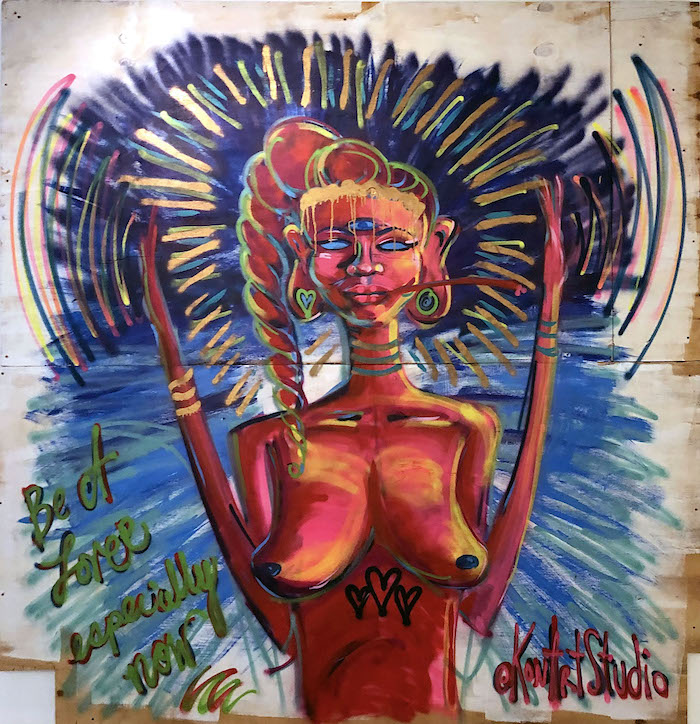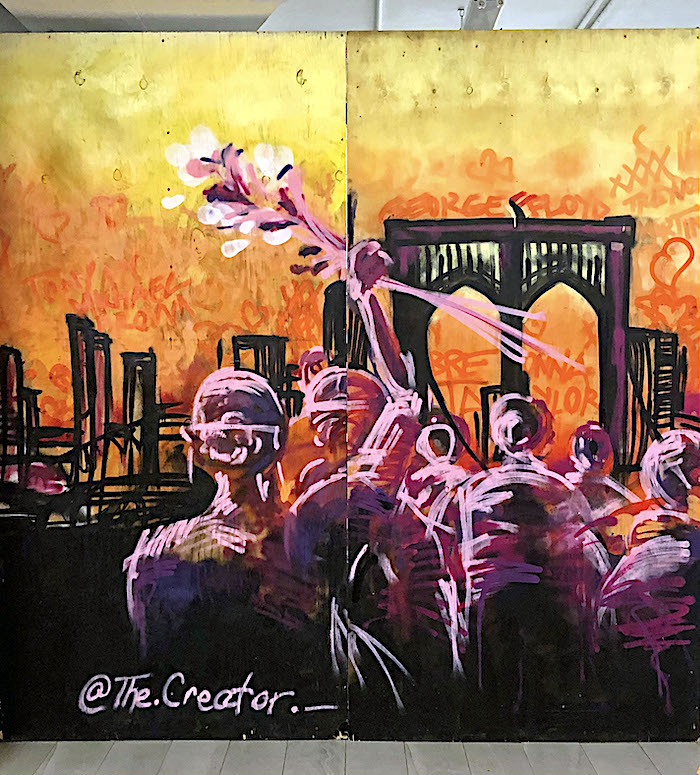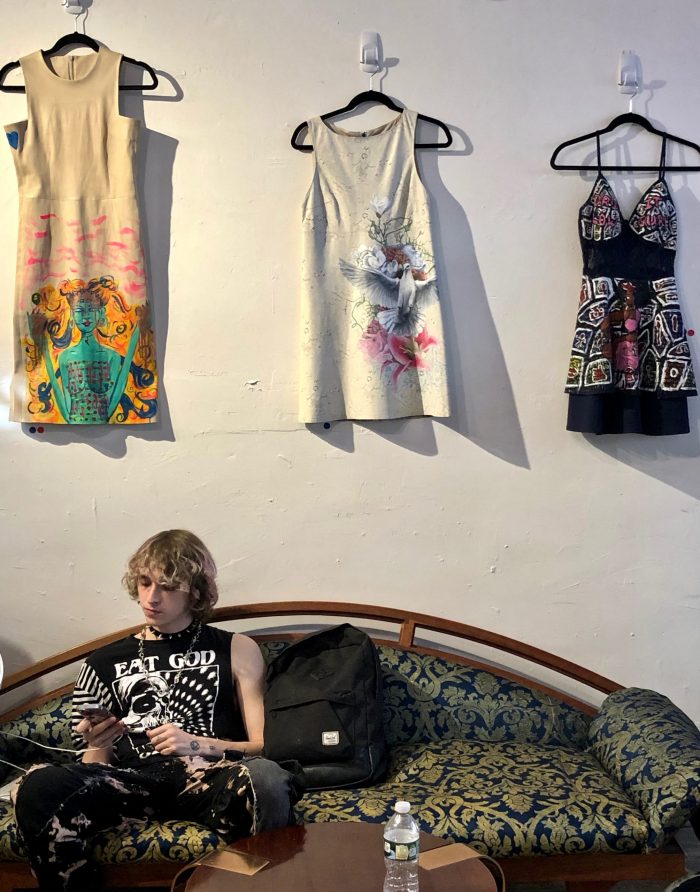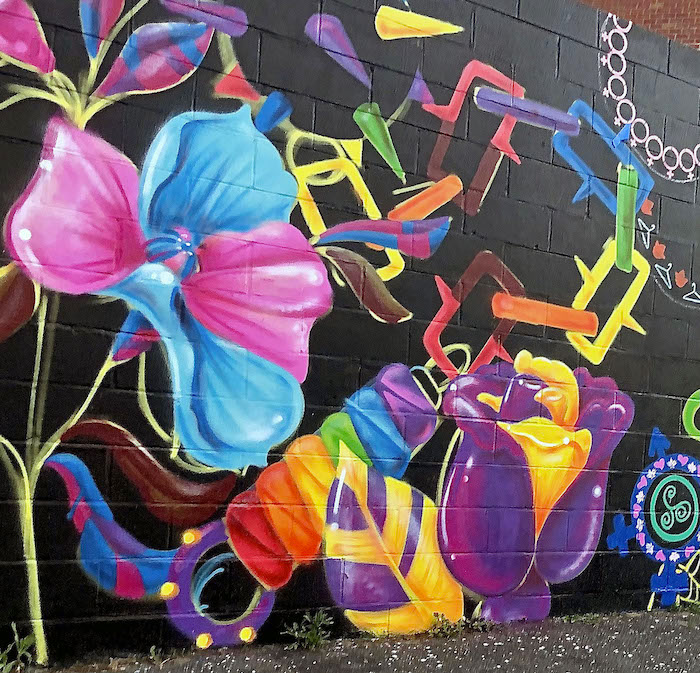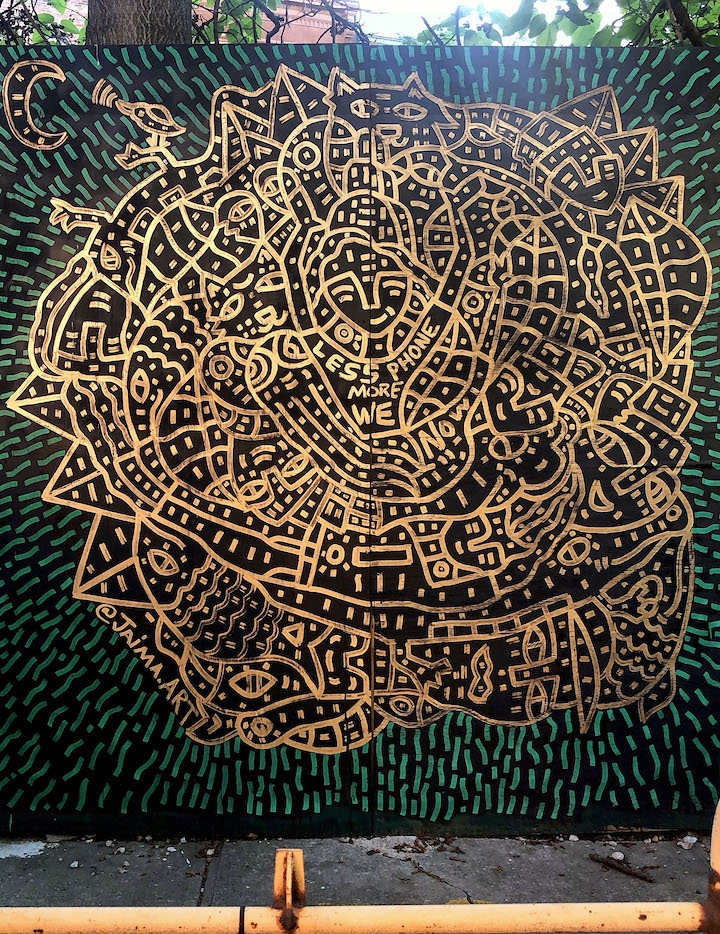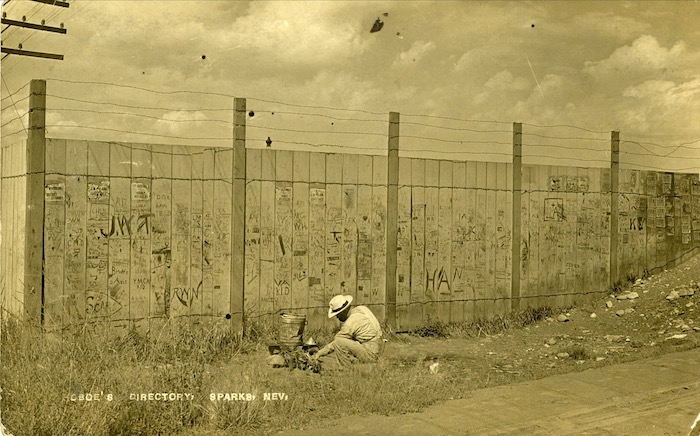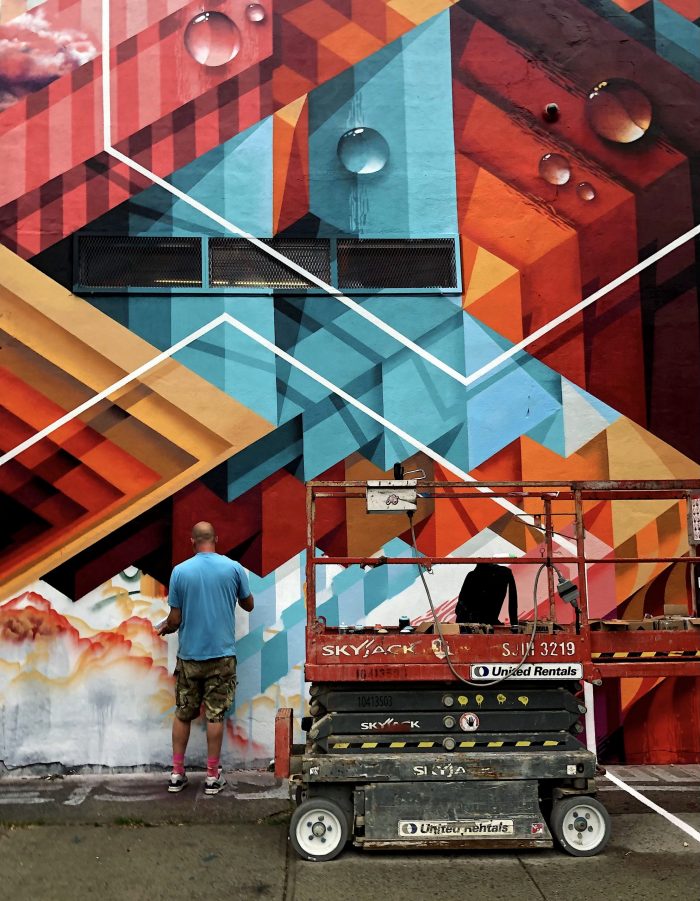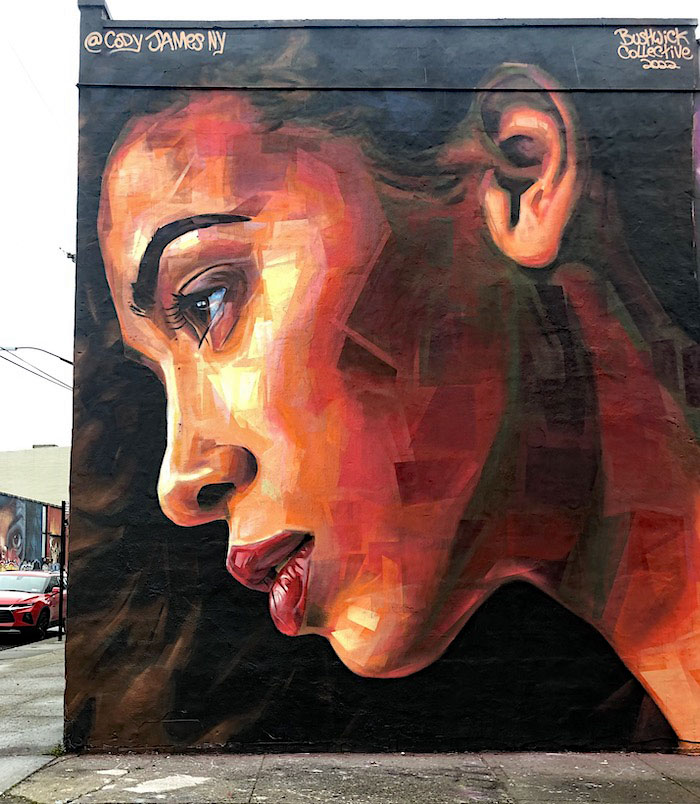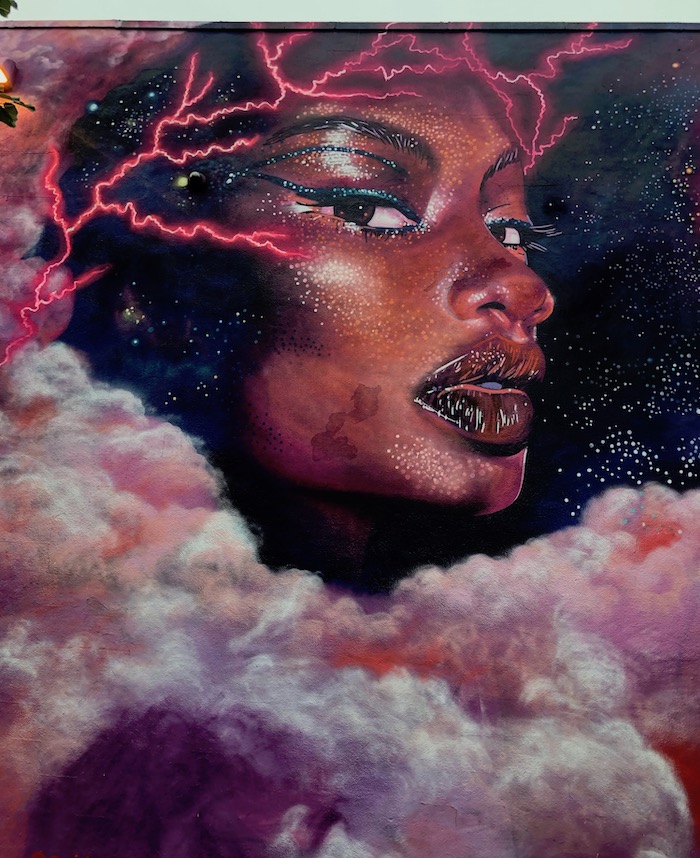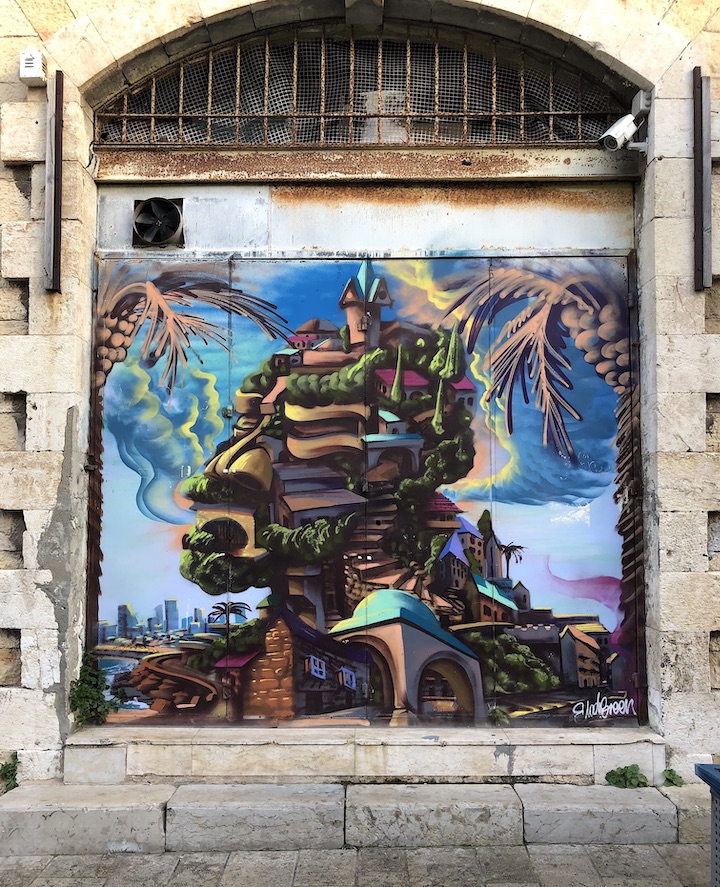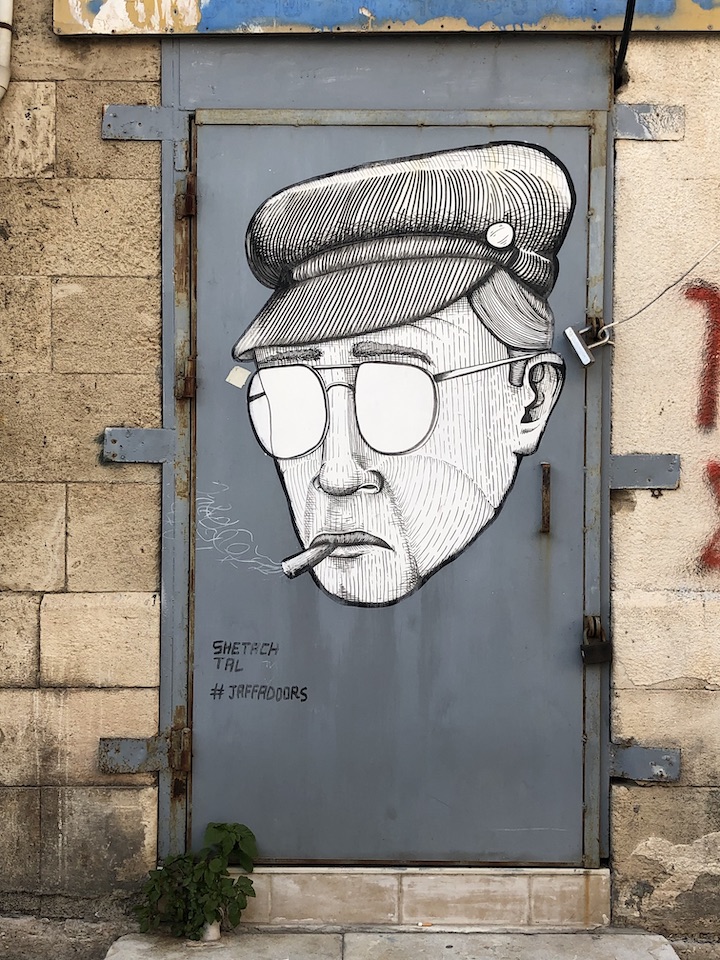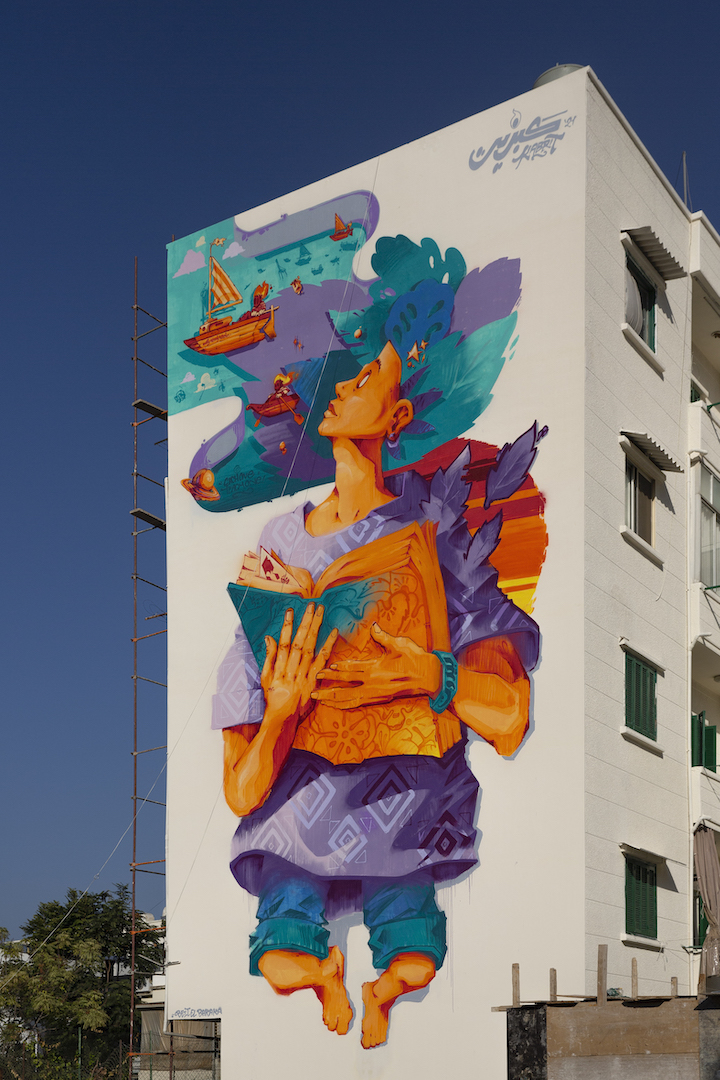
Hoboken-based artist Raisa Nosova was two months pregnant when Russia bombed Kiev. With close family and friends in Ukraine, she felt overwhelmed with anguish at a particularly vulnerable time in her life. Eager to assist the victims of the horrific war, she set up a page on her website featuring original ART FOR UKRAINE. All of the proceeds from the sale of her paintings “went directly to the battlefield delivering medicine and food to trapped Ukrainians.”
But driven by anger and pain, she was determined to do more to raise money and to raise awareness of the Ukrainian people’s precarious plight. After speaking to a Ukrainian family who owned a gas station near Journal Square in Jersey City, she began bringing her vision to the public with a large-scale mural, “Uprooted.” The image pictured above features Raisa Nosova at work on “Uprooted.” Several more images shared by the artist follow:
Corner view of the completed mural

Detail

Raisa Nosova at work on small segment of mural

Another view of the artist

And here you can check out Raisa‘s video to find out more about her mission:
Note: Raisa has been directly on contact with 1. a woman in Ukraine who has been organizing medicine purchase and delivery directly to destroyed cities; 2. an OBGYN/childbirth hospital in Kyiv, and 3. a circle of psychologists who are volunteering to work with adults and children in bombed cities.
Donations can be sent directly by mail to — Raisa Nosova, P O Box 2617, Hoboken NJ 07030
All photos courtesy of the artist; photo 1, 4 & 5 by Joey Palmieri
{ 0 comments }
